By Kerry Grens, Reuters Health
5 Min Read
NEW YORK (Reuters Health) - Two-month-old babies who receive immunizations in the afternoon sleep better afterward than children who have their shots in the morning, according to a new study.
The results suggest a potential method for helping babies sleep through the occasional discomfort that accompanies vaccination, rather than taking a fever reducer as has often been recommended.
Sleep is important after getting shots, said lead author Linda Franck, because sleep “is a sign of a vaccine response, and it’s important to maximizing that response.”
Acetaminophen, which goes by the brand name Tylenol, is commonly given to babies in advance of vaccinations to reduce any increase in temperature and to make them more comfortable.
But Franck’s group reports in the journal Pediatrics that the drug did not appear to help extend sleep.
Franck and her colleagues at the University of California, San Francisco, had set out to test how well acetaminophen helps babies sleep after immunizations by randomly assigning children to either receive the fever-reducer before getting shots or not receive the medication.
The 70 two-month-olds in the study got a number of immunizations, including pneumococcal, diphtheria-tetanus-pertussis (DPT), Haemophilus influenzae type b, poliovirus and hepatitis B vaccines.
The vaccines are part of the Centers for Disease Control and Prevention’s recommendations for routine immunizations.
Though 25 of the babies received a dose of acetaminophen before the shots, most of the babies in the study ended up being given acetaminophen at the time of the shots or afterwards to reduce any fever or discomfort.
All of them wore an ankle monitor that measured the amount of sleep before and after the vaccinations.
Most of the babies slept longer in the 24 hours after the vaccinations than in the 24 hours preceding the shots -- a total of 13 hours of sleep compared to fewer than 12 hours previously.
Those babies who received the shots after 1:30 in the afternoon were more likely to have a larger increase in sleep than babies whose appointments were earlier than 1:30 PM.
Infants who had their vaccinations in the afternoon slept an hour and a half longer, on average, than the day before, while infants who were seen in the morning slept only a half hour longer than the preceding day.
The number of doses of acetaminophen that the children received had no influence on the amount of sleep they got.
Dr. Jason Homme, a pediatrician at the Mayo Clinic in Rochester, Minnesota, said the results provide another reason to pause before using acetaminophen preventively for vaccinations.
Homme, who was not involved in this study, noted a study from 2009 that found that acetaminophen appeared to reduce the immune response to vaccines (see Reuters report of October 16, 2009).
“That has caused some of us to reconsider giving (acetaminophen) in a preventative manner,” said Homme.
Homme said that the importance of sleep regarding children’s immune response to vaccines has not been fully worked out.
A study in adults found that they had a stronger immune response to vaccines if they were not sleep-deprived before or after the vaccinations.
Franck said she’d like to confirm her findings with another study, and if they hold up, it might make sense to schedule appointments for children’s two-month vaccines in the afternoon.
“It seems like a fairly easy thing to schedule that baby’s first immunization in the afternoon so they spend less time in the day in discomfort and hopefully sleep it off and sleep longer,” she said.
Franck said that making immunizations as pleasant an experience as possible for babies and their parents will encourage moms and dads to stick to the vaccine recommendations from the Centers for Disease Control and Prevention.
Homme agreed that it’s important to make appointments as simple as possible for parents to get to, and there’s no reason yet to postpone or avoid shots given in the morning.
SOURCE: bit.ly/uTdpYu, Pediatrics, November 28, 2011.
Kara Wilson Editor & Infant Sleep Educator
No parent likes to see their baby in pain, but vaccines are essential to keep them protected from serious diseases, like polio, whooping cough, and measles. Just like any medication, your baby may experience some side effects afterwards. Most of the time, these reactions are mild and usually last one or two days. They can happen straight away or take a few days to show up.
Just like any medication, your baby may experience some side effects afterwards. Most of the time, these reactions are mild and usually last one or two days. They can happen straight away or take a few days to show up.
However, parents can be prepared to ease and relieve any side effects, making the process more comfortable for your baby (and less anxiety-inducing for you!).
Let’s look at what side effects you could expect after your baby’s vaccinations, and how you can help to manage them.
What are the side effects for babies after immunisation?The common, mild, and normal side effects of immunisation are:
The more serious and rare side effects include:

Here are the best tactics to soothe your baby after vaccinations:
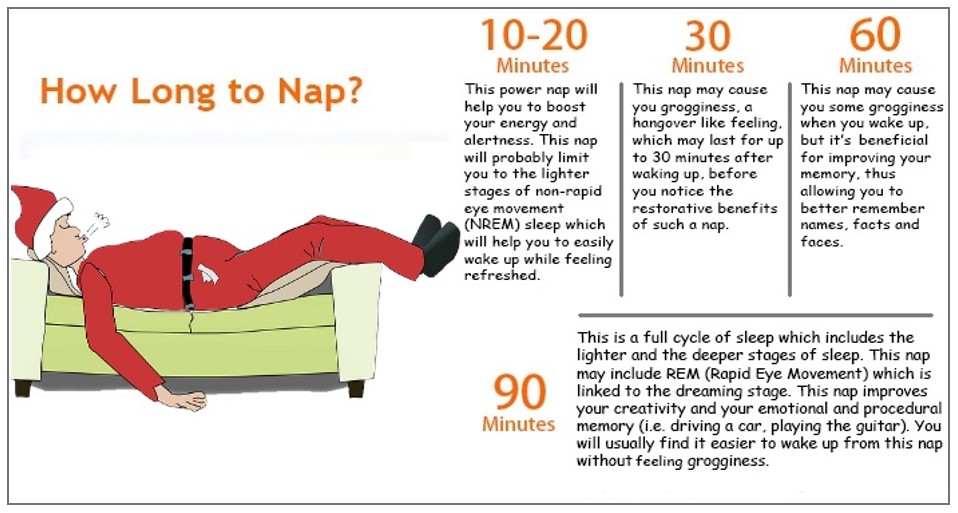
If you think your baby is having serious side effects from their vaccines, is crying inconsolably for more than 2-3 hours, has had a seizure, or has swelling of the face, see your GP or head to your nearest emergency department immediately. Nurse on Call is also available 24 hours a day to help you in the middle of the night if needed. Please check your individual state for number
The causes of muscle weakness are many and there are a wide range of conditions that can cause muscle weakness. These can be both well-known diseases and rather rare conditions. Muscle weakness can be reversible and persistent. However, in most cases, muscle weakness can be treated with exercise, physiotherapy, and acupuncture.
These can be both well-known diseases and rather rare conditions. Muscle weakness can be reversible and persistent. However, in most cases, muscle weakness can be treated with exercise, physiotherapy, and acupuncture.
Muscle weakness is a fairly common complaint, but the word weakness has a wide range of meanings, including fatigue, decreased muscle strength, and the inability of the muscles to work at all. There is an even wider range of possible causes. nine0003
The term muscle weakness can be used to describe several different conditions.
This muscle weakness manifests itself as an inability to perform the movement that a person wants to perform with the help of muscles the first time. There is an objective decrease in muscle strength and strength does not increase regardless of effort. That is, the muscle does not work properly - this is abnormal.
When this kind of muscle weakness occurs, the muscles appear to have fallen asleep, smaller in volume.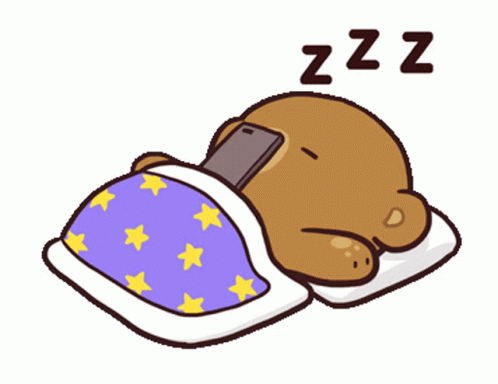 This can happen, for example, after a stroke. The same visual picture occurs with muscular dystrophy. Both conditions lead to weakening of the muscles that cannot perform the usual load. And this is a real change in muscle strength. nine0003
This can happen, for example, after a stroke. The same visual picture occurs with muscular dystrophy. Both conditions lead to weakening of the muscles that cannot perform the usual load. And this is a real change in muscle strength. nine0003
Fatigue is sometimes called asthenia. This is the feeling of tiredness or exhaustion that a person feels when the muscles are used. The muscles don't really get weaker, they can still do their job, but doing muscle work takes a lot of effort. This type of muscle weakness is often seen in people with chronic fatigue syndrome, sleep disorders, depression, and chronic heart, lung, and kidney disease. This may be due to a decrease in the rate at which the muscles can receive the required amount of energy. nine0003
In some cases, muscle fatigue mainly has increased fatigue - the muscle starts to work, but quickly gets tired and takes more time to restore function. Fatigue is often associated with muscle fatigue, but this is most noticeable in rare conditions such as myasthenia gravis and myotonic dystrophy.
The difference between these three types of muscle weakness is often not obvious and a patient may have more than one type of weakness at once. Also, one kind of weakness can alternate with another kind of weakness. But with a careful approach to diagnosis, the doctor manages to determine the main type of muscle weakness, since certain diseases are characterized by one or another type of muscle weakness. nine0003
Lack of adequate physical activity - inactive (sedentary) lifestyle.
Lack of muscle exercise is one of the most common causes of muscle weakness. If the muscles are not used, then the muscle fibers in the muscles are partly replaced by fat. And over time, the muscles weaken: the muscles become less dense and more flabby. And although muscle fibers do not lose their strength, but their number decreases, and they are not reduced as effectively. And the person feels that they have become smaller in volume. When you try to perform certain movements, fatigue sets in faster. The condition is reversible with reasonable regular exercise. But as we age, this condition becomes more pronounced. nine0003
When you try to perform certain movements, fatigue sets in faster. The condition is reversible with reasonable regular exercise. But as we age, this condition becomes more pronounced. nine0003
Maximum muscle strength and a short period of recovery after exercise is observed at the age of 20-30 years. That is why most great athletes achieve high results at this age. However, strengthening muscles through regular exercise can be done at any age. Many successful distance runners have been in their 40s. Muscle tolerance during a long activity, such as a marathon, remains high for longer than during a powerful, short burst of activity, such as a sprint. nine0003
It is always good when a person has sufficient physical activity at any age. However, recovery from muscle and tendon injuries is slower with age. At whatever age a person decides to improve their physical fitness, a reasonable training regimen is important. And it is better to coordinate training with a specialist (instructor or exercise therapy doctor).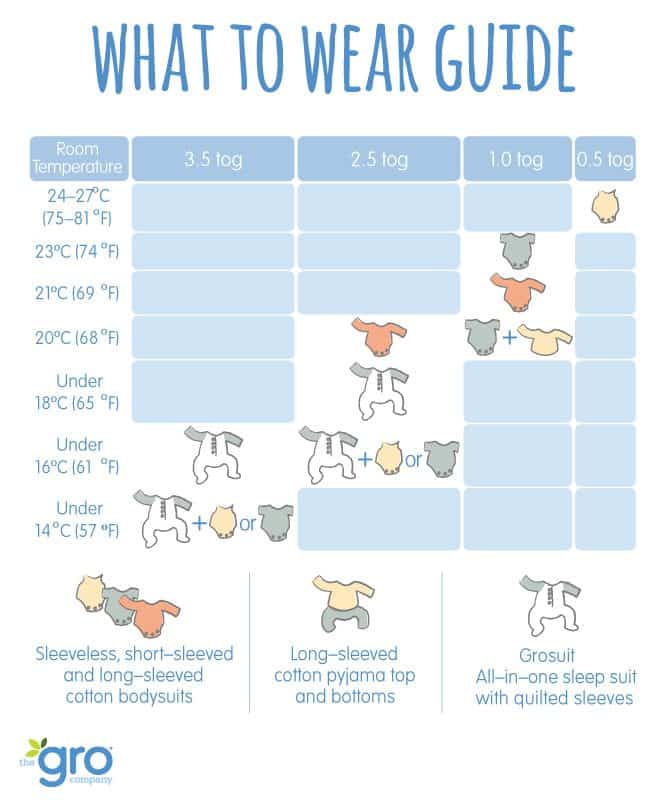
Aging
As we age, muscles lose strength and mass and become weaker. While most people accept this as a natural consequence of age - especially if the age is decent, however, the inability to do what was possible at a younger age often brings discomfort. However, exercise is still beneficial in old age, and safe exercise can increase muscle strength. But the recovery time after an injury is much longer in old age, as involutional changes in metabolism occur and bone fragility increases. nine0003
Infections
Infections and diseases are among the most common causes of temporary muscle fatigue. This occurs due to inflammatory processes in the muscles. And sometimes, even if the infectious disease has regressed, the restoration of muscle strength can take a long period of time. Sometimes this can cause chronic fatigue syndrome. Any disease with fever and inflammation of the muscles can be a trigger for chronic fatigue syndrome. However, some diseases are more likely to cause this syndrome. These include the flu, Epstein-Barr virus, HIV, Lyme disease, and hepatitis C. Other less common causes are tuberculosis, malaria, syphilis, polio, and dengue fever. nine0003
However, some diseases are more likely to cause this syndrome. These include the flu, Epstein-Barr virus, HIV, Lyme disease, and hepatitis C. Other less common causes are tuberculosis, malaria, syphilis, polio, and dengue fever. nine0003
Pregnancy
During and immediately after pregnancy, high levels of steroids in the blood, combined with iron deficiency, can cause muscle fatigue. This is a completely normal muscle reaction to pregnancy, however, certain gymnastics can and should be carried out, but significant physical exertion should be excluded. In addition, in pregnant women, due to a violation of biomechanics, pain in the lower back often occurs.
Chronic diseases
Many chronic diseases cause muscle weakness. In some cases, this is due to a reduction in the flow of blood and nutrients to the muscles.
Peripheral vascular disease is caused by narrowing of the arteries, usually due to cholesterol deposits, and is triggered by poor diet and smoking.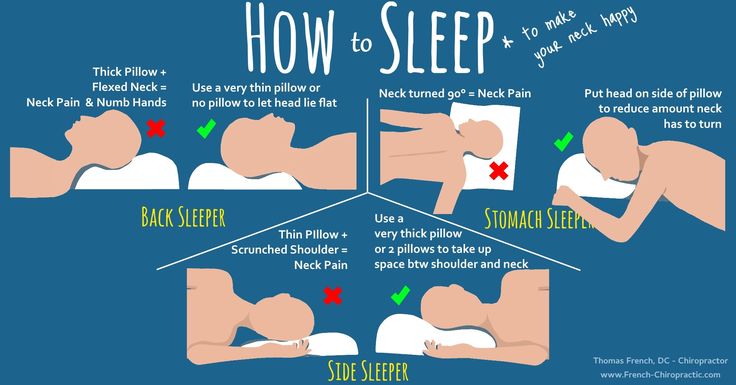 The supply of blood to the muscles is reduced, and this becomes especially noticeable during exercise, when the blood flow cannot cope with the needs of the muscles. Pain is often more characteristic of peripheral vascular disease than muscle weakness. nine0003
The supply of blood to the muscles is reduced, and this becomes especially noticeable during exercise, when the blood flow cannot cope with the needs of the muscles. Pain is often more characteristic of peripheral vascular disease than muscle weakness. nine0003
Diabetes - this condition can lead to muscle weakness and loss of fitness. High blood sugar puts the muscles at a disadvantage, their functioning is impaired. In addition, as diabetes progresses, there is a disturbance in the structure of the peripheral nerves (polyneuropathy), which in turn impairs the normal innervation of the muscles and leads to muscle weakness. In addition to the nerves, diabetes causes damage to the arteries, which also leads to poor blood supply to the muscles and weakness. Heart disease, especially heart failure, can lead to impaired blood supply to the muscles due to a decrease in myocardial contractility and actively working muscles do not receive enough blood (oxygen and nutrients) at the peak of the load and this can lead to rapid muscle fatigue.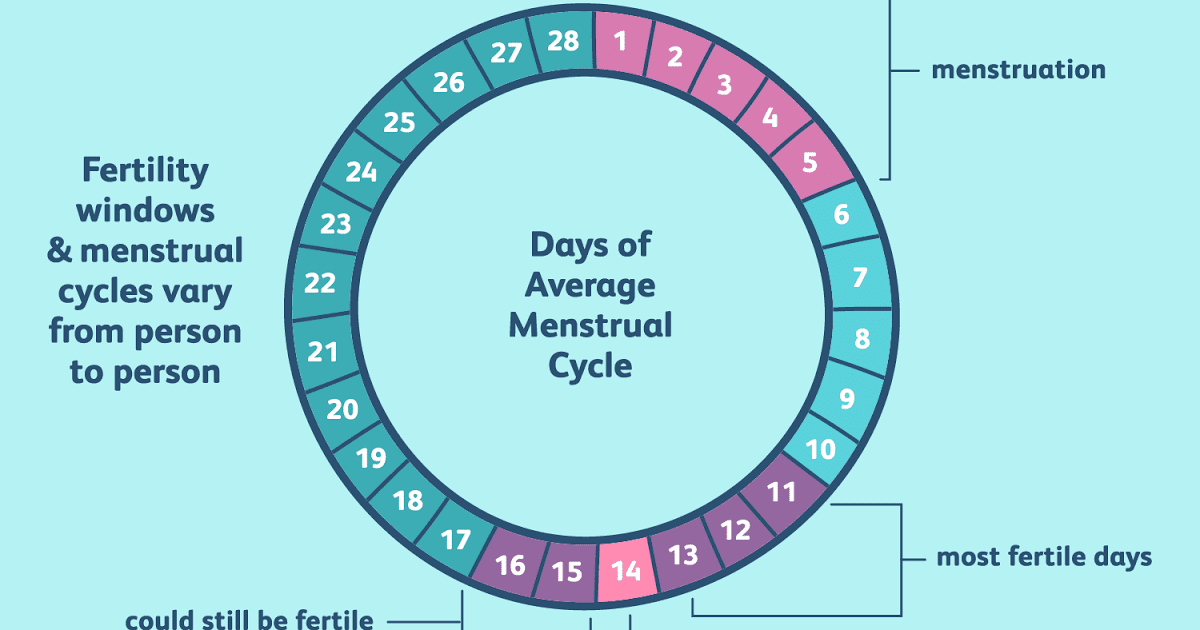 nine0003
nine0003
Chronic lung diseases , such as chronic obstructive pulmonary disease (COPD), reduce the body's ability to consume oxygen. Muscles require a fast supply of oxygen from the blood, especially during exercise. Decreased oxygen consumption leads to muscle fatigue. Over time, chronic lung disease can lead to muscle atrophy, although this mostly happens in advanced cases when blood oxygen levels begin to drop.
Chronic kidney disease can lead to an imbalance of minerals and salts in the body, and may also affect the level of calcium and vitamin D. Kidney disease also causes the accumulation of toxic substances (toxins) in the blood, as a violation of the excretory function of the kidneys reduces their excretion from the body. These changes can lead to both true muscle weakness and muscle fatigue.
Anemia - is a lack of red blood cells. There are many causes of anemia, including poor nutrition, blood loss, pregnancy, genetic diseases, infections, and cancer. This reduces the ability of the blood to carry oxygen to the muscles in order for the muscles to contract fully. Anemia often develops rather slowly, so that by the time of diagnosis, muscle weakness and shortness of breath are already noted. nine0003
This reduces the ability of the blood to carry oxygen to the muscles in order for the muscles to contract fully. Anemia often develops rather slowly, so that by the time of diagnosis, muscle weakness and shortness of breath are already noted. nine0003
Diseases of the central nervous system
Anxiety: general fatigue can be caused by anxiety. This is due to the increased activity of the adrenaline system in the body.
Depression: general fatigue can also be caused by depression.
Anxiety and depression are conditions that tend to cause feelings of tiredness and "fatigue" rather than true weakness.
Chronic pain - general effect on energy levels can lead to muscle weakness. As with anxiety, chronic pain stimulates the release of chemicals (hormones) in the body that respond to pain and injury. These chemicals lead to feelings of tiredness or fatigue. With chronic pain, muscle weakness can also occur, as the muscles cannot be used due to pain and discomfort. nine0003
nine0003
Muscle injuries due to trauma
There are many factors that lead to direct muscle damage. The most obvious are injuries or injuries such as sports injuries, sprains and dislocations. Performing exercises without "warming up" and stretching the muscles is a common cause of muscle damage. With any muscle injury, bleeding occurs from damaged muscle fibers within the muscle, followed by swelling and inflammation. This makes the muscles less strong and also painful when performing movements. The main symptom is localized pain, but later on weakness may appear. nine0003
Medicines
Many medicines can cause muscle weakness and muscle damage as a side effect or allergic reaction. It usually starts out as fatigue. But damage can progress if medication is not stopped. The most commonly reported medications are statins, some antibiotics (including ciprofloxacin and penicillin), and anti-inflammatory pain medications (such as naproxen and diclofenac).
Long-term use of oral steroids also causes muscle weakness and atrophy. This is an expected side effect of steroids with long-term use and therefore doctors try to reduce the duration of steroid use. Less commonly used medications that can cause muscle weakness and muscle damage include:
Other substances.
Long-term use of alcohol can lead to weakness of the shoulder and hip muscles.
Smoking can indirectly weaken muscles. Smoking causes narrowing of the arteries, which leads to peripheral vascular disease. nine0003
Cocaine abuse causes marked muscle weakness, as do other drugs.
Sleep disorders
Problems that disrupt or reduce the duration of sleep, leading to muscle fatigue, muscle fatigue. These disorders may include: insomnia, anxiety, depression, chronic pain, restless leg syndrome, shift work, and having young children who stay awake at night.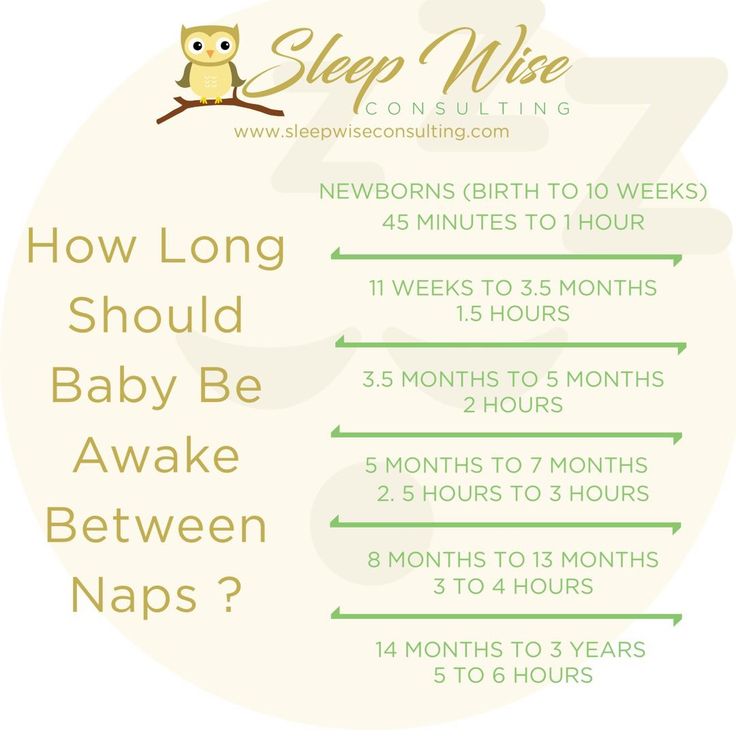
Chronic Fatigue Syndrome
This condition is sometimes associated with some viral infections such as Epstein-Barr virus and influenza, but the genesis of this condition is not fully understood. Muscles are not inflamed, but get tired very quickly. Patients often feel the need for greater effort to perform muscle activities that they previously performed easily.
In chronic fatigue syndrome, muscles that are not collapsed and may have normal strength when tested. This is reassuring, as it means that the chances of recovery and full functional recovery are very high. CFS also causes psychological fatigue when performing intellectual activities, such as long reading and communication also becomes tiring. Patients often show signs of depression and sleep disturbances. nine0003
Fibromyalgia
This condition is similar in symptoms to chronic fatigue syndrome. However, in fibromyalgia, the muscles become tender to the touch and tire very quickly.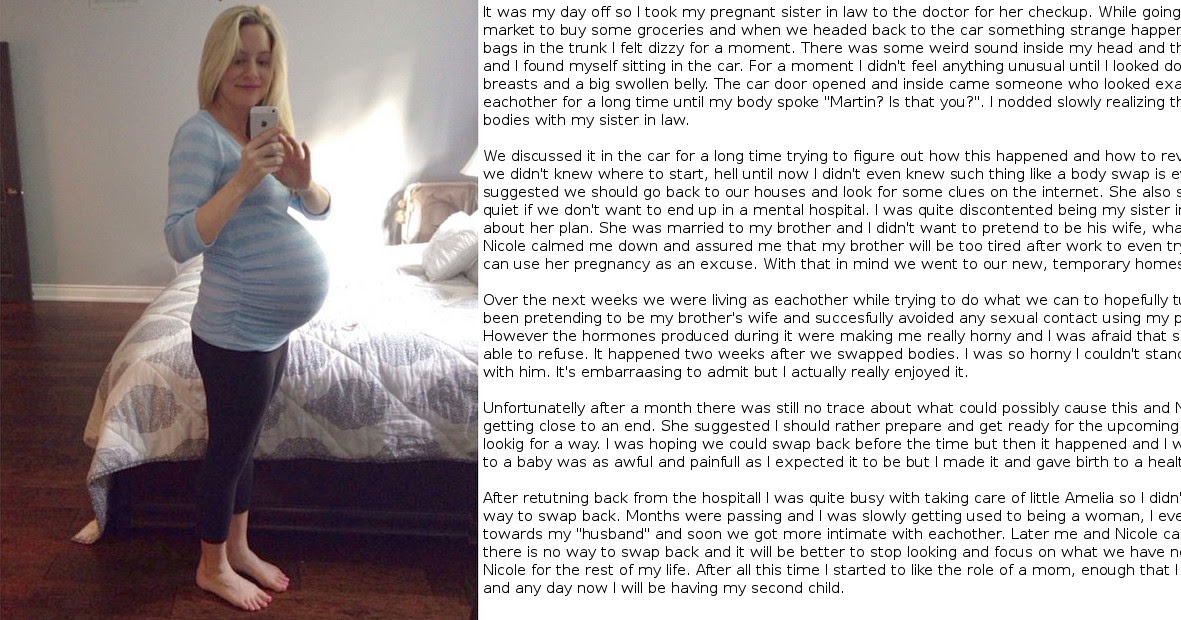 Muscles in fibromyalgia do not collapse and remain strong on formal muscle testing. Patients tend to complain more of pain than fatigue or weakness.
Muscles in fibromyalgia do not collapse and remain strong on formal muscle testing. Patients tend to complain more of pain than fatigue or weakness.
Thyroid dysfunction (hypothyroidism)
In this condition, the lack of thyroid hormones leads to general fatigue. And if hypothyroidism is not treated, then muscle degeneration and hypotrophy may develop over time. Such changes can be serious and in some cases irreversible. Hypothyroidism is a common disease, but, as a rule, with timely selection of treatment, muscle problems can be avoided. nine0003
Lack of fluid in the body (dehydration) and electrolyte imbalance.
Problems with the normal balance of salts in the body, including as a result of dehydration, can cause muscle fatigue. Muscle problems can only be very serious in extreme cases, such as dehydration during a marathon. Muscles work worse when there is an imbalance of electrolytes in the blood.
Diseases accompanied by muscle inflammation
Inflammatory muscle diseases usually develop in the elderly and include both polymyalgia, as well as polymyositis and dermatomyositis. Some of these conditions are well corrected by taking steroids (which have to be taken for many months before the therapeutic effect appears). Unfortunately, long-term use of steroids themselves can cause muscle loss and weakness.
Some of these conditions are well corrected by taking steroids (which have to be taken for many months before the therapeutic effect appears). Unfortunately, long-term use of steroids themselves can cause muscle loss and weakness.
Systemic inflammatory diseases such as SLE and rheumatoid arthritis often cause muscle weakness. In a small percentage of cases, rheumatoid arthritis, muscle weakness and fatigue may be the only symptoms of the disease for a significant amount of time. nine0003
Cancer
Cancer and other cancers can cause direct muscle damage, but having cancer anywhere in the body can also cause generalized muscle fatigue. In the advanced stages of cancer, body weight loss also leads to true muscle weakness. Muscle weakness is usually not the first sign of cancer and occurs more often in the later stages of cancer.
Neurological conditions resulting in muscle damage .
Diseases affecting the nerves usually result in true muscle weakness.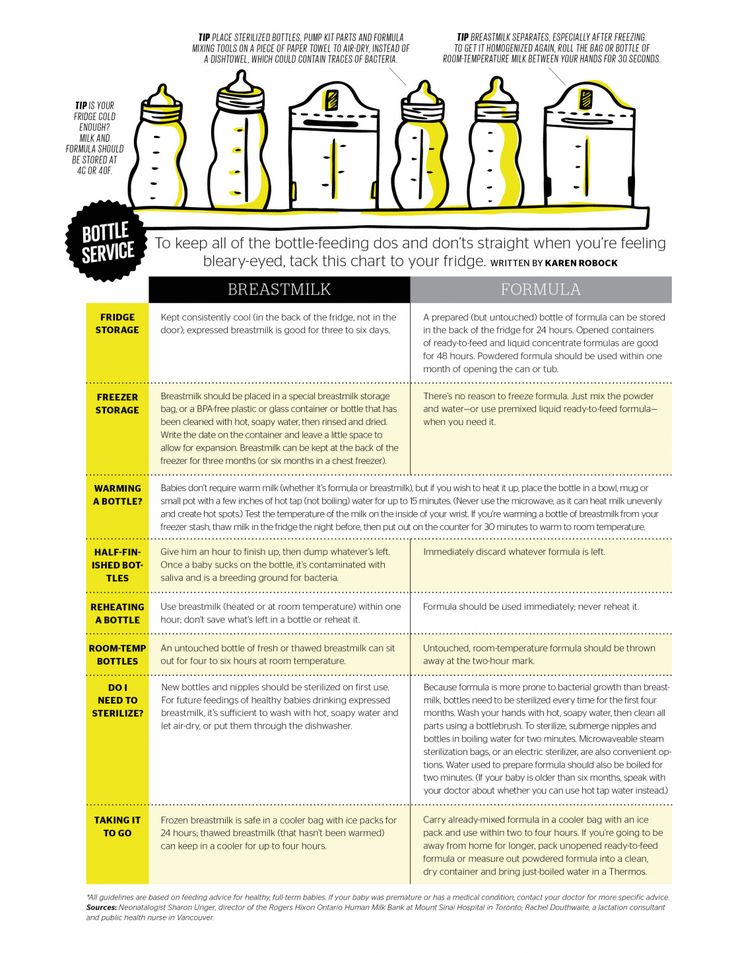 This is because if the nerve of the muscle fiber stops working properly, the muscle fiber cannot contract and, as a result of the lack of movement, the muscle will atrophy. Neurological diseases: Muscle weakness can be caused by cerebrovascular diseases such as stroke and cerebral hemorrhages or spinal cord injuries. Muscles that become partially or completely paralyzed lose their normal strength and eventually atrophy. In some cases, muscle changes are significant and recovery is very slow or function cannot be restored. nine0003
This is because if the nerve of the muscle fiber stops working properly, the muscle fiber cannot contract and, as a result of the lack of movement, the muscle will atrophy. Neurological diseases: Muscle weakness can be caused by cerebrovascular diseases such as stroke and cerebral hemorrhages or spinal cord injuries. Muscles that become partially or completely paralyzed lose their normal strength and eventually atrophy. In some cases, muscle changes are significant and recovery is very slow or function cannot be restored. nine0003
Diseases of the spine: when the nerves are damaged (compressed at the exit of the spine by a herniation, protrusion or osteophyte), muscle weakness may occur. When a nerve is compressed, conduction and motor disturbances occur in the zone of innervation of the root, and muscle weakness develops only in muscles innervated by certain nerves that have undergone compression
Other nervous diseases :
Multiple sclerosis - caused by damage to nerves in the brain and spinal cord and can lead to sudden paralysis. With multiple sclerosis, partial restoration of functions is possible with adequate treatment. nine0003
With multiple sclerosis, partial restoration of functions is possible with adequate treatment. nine0003
Guillain-Barré syndrome is an acute autoimmune inflammatory polyradiculoneuropathy, manifested by flaccid paresis, sensory disturbances, autonomic disorders, caused by a viral infection
Parkinson's disease: this is a progressive disease of the central nervous system, both the motor sphere and the intellectual and emotional sphere. It mainly affects people over the age of 60 and in addition to muscle weakness, Parkinson's patients experience tremors and muscle stiffness. They often have difficulty starting and stopping movement, and are often depressed. nine0003
Rare causes of muscle weakness
Genetic diseases affecting muscles
Muscular dystrophies - hereditary diseases that affect muscles are quite rare. The most famous such disease is Duchenne muscular dystrophy. This disease occurs in children and leads to a gradual loss of muscle strength.
Some rare muscular dystrophies may debut in adulthood, including Charcot-Marie-Tooth syndrome, and Facioscapulohumeral dystrophy syndrome. They also cause a gradual loss of muscle strength and often these conditions can lead to disability and wheelchair confinement. nine0003
Sarcoidosis - is a rare disease in which clusters of cells (granulomas) form in the skin, lungs, and soft tissues, including muscles. The condition may heal on its own after a few years.
Amyloidosis - is also a rare disease in which there is an accumulation (deposits) of an abnormal protein (amyloid) throughout the body, including in the muscles and kidneys.
Other rare causes: Direct muscle damage can occur in rare hereditary metabolic diseases. Examples include: glycogen storage diseases and, even more rarely, mitochondrial diseases, which occur when the energy systems within muscle cells do not work properly. nine0003
Myotonic dystrophy - is a rare genetic muscle disease in which the muscles tire quickly. Myotonic dystrophy is passed on from generation to generation, and, as a rule, with each subsequent generation, the manifestations of the disease become more pronounced.
Myotonic dystrophy is passed on from generation to generation, and, as a rule, with each subsequent generation, the manifestations of the disease become more pronounced.
Motor neuron disease is a progressive nerve disease that affects all parts of the body. Most forms of motor neuron disease begin in the distal extremities and gradually involve all the muscles of the body. The disease progresses over months or years, and patients rapidly develop severe muscle weakness and muscle atrophy. nine0003
Motor neuron disease is most common in men over 50, but there have been many notable exceptions to this rule, including famous astrophysicist Stephen Hawking. There are many different forms of motor neuron disease, but no successful treatment has yet been developed.
Myasthenia gravis: - is a rare muscle disease in which muscles tire quickly and take a long time to recover from contractile function. Muscle dysfunction may be so severe that patients cannot even hold their eyelids and speech becomes slurred. nine0003
nine0003
Poisons - poisonous substances also often cause muscle weakness and paralysis due to the effect on the nerves. Examples are phosphates and botulinum toxin. In case of exposure to phosphates, weakness and paralysis may be persistent.
Addison's disease
Addison's disease is a rare disorder in which the adrenal glands become underactive, leading to a lack of steroids in the blood and an imbalance in blood electrolytes. The disease usually develops gradually. Patients may notice a change in skin color (tanning) due to skin pigmentation. There may be weight loss. Muscle fatigue can be mild and is often an early symptom. The disease is often difficult to diagnose and special examinations are required to diagnose this disease. Other rare hormonal causes of muscle weakness include acromegaly (an overproduction of growth hormone), an underactive pituitary gland (hypopituitarism), and severe vitamin D deficiency.
If you have muscle weakness, you should consult a doctor who will be primarily interested in answers to the following questions:
The physician will also need to examine the patient to determine which muscles are affected by weakness and whether the patient has actual or suspected muscle weakness. The doctor will check to see if there are signs of the muscles becoming softer to the touch (which could be a sign of inflammation) or if the muscles are tiring too quickly.
The doctor will check to see if there are signs of the muscles becoming softer to the touch (which could be a sign of inflammation) or if the muscles are tiring too quickly.
The doctor should then check the nerve conduction to determine if there is a conduction disorder from the nerves to the muscles. In addition, the doctor may need to check the central nervous system, including balance and coordination, and may order laboratory tests to determine changes in hormone levels, electrolytes, and other indicators. nine0003
If this does not allow determining the cause of muscle weakness, then other diagnostic methods can be prescribed:
The combination of medical history, symptoms, physical examination data and the results of laboratory and instrumental methods of research allows in most cases to find out the true cause of muscle weakness and determine the necessary treatment tactics. Depending on the genesis of muscle weakness (infectious, traumatic, neurological, metabolic drug, etc.), the treatment should be pathogenetic. Treatment can be either conservative or surgical. nine0003
Depending on the genesis of muscle weakness (infectious, traumatic, neurological, metabolic drug, etc.), the treatment should be pathogenetic. Treatment can be either conservative or surgical. nine0003
These are comments from Community readers. Collected into one material, carefully edited and formatted according to editorial standards.
Yulia Konyakhina
read readers' stories
Author Profile
Laser eye surgery doesn't always go smoothly.
After surgery, for example, dry eyes may occur, night vision may be reduced, or a halo effect may appear - when a halo of light is visible around luminous objects. Usually, side effects disappear within six months, but sometimes they can persist until the end of life. nine0003
We asked readers to tell us what they had to face after laser correction and how they endured these troubles.
There are no recommendations for treatment in the article, only the personal experience of readers. Please consult with your doctor before deciding on treatment. The responsibility for your health rests solely with you.
Please consult with your doctor before deciding on treatment. The responsibility for your health rests solely with you.
Trouble No. 1
Difficulties with corneal healing Anastasia Gorbunova
took a long time to recover
During the preoperative diagnostics, they warned me that I had a thin cornea with a thin epithelium. They explained this by individual characteristics and partly by the long wearing of contact lenses: I used them for more than seven years every day.
The doctor assumed that there might be difficulties with the healing of the cornea, so immediately after the operation I was put on bandage lenses.
When I came in for an examination the next day, everything was fine, the lenses were removed. I was given standard recommendations and prescribed eye drops. But already on the third day after the operation, the left eye began to see indistinctly. The right one saw perfectly. nine0003
/list/oftalmologiya/
11 important questions for an adult ophthalmologist Lyudmila Panyushkina
An examination by a doctor showed that the cornea in the left eye, which seemed to have tightened before, gave a “rollback”. They gave me several injections in the eye, one of the drugs was an antibiotic: the doctor played it safe in case of an infection. She prescribed two more types of drops, connected a second ophthalmologist to the observation and was in touch with me by phone all the time of treatment.
They gave me several injections in the eye, one of the drugs was an antibiotic: the doctor played it safe in case of an infection. She prescribed two more types of drops, connected a second ophthalmologist to the observation and was in touch with me by phone all the time of treatment.
The eye was swollen, it hurt, it was difficult to open it, and it looked terrible: red and slightly protruding. nine0314On the fourth day, the situation did not worsen. As a result, the infection was ruled out, the drugs were canceled, leaving only moisturizing drops and a gel with dexpanthenol, and a bandage lens was installed again, this time for two days.
On the sixth day, my left eye still healed, and now I can see very clearly with both eyes. Before the operation, I had -7 diopters, and now I have 100% vision. The only concern is the standard dryness, which I deal with with the help of drops.
I think I was lucky to have a doctor and quick help. Although this incident rattled my nerves.
nine0003
Trouble No. 2
Double visionAnna
got used to minor discomfortI made a correction in 2017 using the Lasik method. Everything went well: initially it was -2.75 diopters in the right eye, -2.5 diopters in the left, and as a result, vision became even sharper than one.
Trouble appeared after a year or two: I began to notice double vision on luminous objects such as shop windows and signs. The contour is floating, but tolerable. Even in the eyes there was a feeling of dryness, the doctor explained this by the fact that before the operation I wore lenses for 10 years. This had a bad effect on the cornea, and the correction exacerbated the discomfort that was already there. I can safely not drip moisturizing drops, but the doctor ordered me to do this several times a day, so I try not to forget. nine0003
/vision-correction/
How I did laser vision correction
Unfortunately, the correction does not eliminate the original cause of vision impairment, so now, after five years, my vision is down.
The right eye began to see worse by 0.5 diopters, the left - by 0.25.
Trouble No. 3
Deterioration of night visionCloud
does not regret that she decided to have surgeryastigmatism. The minus seems small, but in the SB table I saw only the first line, then everything floated. nine0003
The operation was Lasik and went so smoothly that in the evening of the same day I went to watch volleyball practice. I remember how my acquaintances laughed at the fact that I was sitting in the hall in sunglasses.
For the first three months, the cornea swelled after sleep: in the mornings I could not see clearly, but an hour after waking up, my vision returned to normal. There was no dryness in the eyes. Now, the only side effect is a severely reduced night vision: at dusk, I feel blind. But since I live in Moscow, I hardly suffer from this, because it is always and everywhere light here. nine0003
/glaza-goroda/
How much vision correction costs in different cities
I do not regret the operation.
I believe that the ability to see well is priceless.
Trouble No. 4
Dryness in the eyesLena T
has not fully recovered yetBefore the correction, the vision was -12, now the acuity is 90%. Of the side effects, there is dryness in the eyes, because of it I sometimes see indistinctly, but I still feel better than with glasses or lenses. It is important that only three months have passed since the operation, doctors say that it takes six months to fully recover. nine0003
Mashenka Khabenskaya
is ready to have the operation againI was recommended photorefractive keratectomy, or PRK, according to indications. The operation is not easy: the cornea after it heals longer than after other laser techniques, and the eyes are very sore. Even the doctor dissuaded me from the correction, but in the end everything turned out to be not so scary.
What to do? 07/27/20
My eyes are drying up.
How to choose normal drops?
In the right eye, however, the vision turned out to be slightly less than unity. There is an unpleasant dryness in the morning. When your eyes get tired, white subtitles may split on a black screen. nine0003
Despite the side effects, she never regretted the operation. If I went back to the past, I would make a correction again.
Kate Vesna
drives without glassesI had -10 vision and a thin cornea. Before deciding on a correction, I visited three different clinics in St. Petersburg for diagnostics. Some doctors refused, others agreed to take him for an operation. I thought for a long time. As a result, she decided and had the operation in 2019 - hit or miss. nine0003
Side effects include dryness, sometimes blurred vision in the dark.
Over the course of three years, my eyesight went down a little - about 1.5 diopters returned. But I still drive a car without glasses. I don't regret the decision I made.
I recommend the correction for those who cannot wear lenses and who have a high degree of myopia. The main thing is to weigh all the pros and cons before the operation. For me, the side effects were minor.
Yulia Ushakova
uses moisturizing dropsAfter correction and due to constant work at the computer, dry eye syndrome developed. I used Systane drops, but after opening they are stored for just a few days. Now I’m buying Hilo-Komod, they have a bottle with a pump, you can store it for a month, I just have time to use it.
“There was sand in my eyes”: 6 moisturizing eye drops
Trouble No. 5
Halo effectEkaterina Kulaeva
glad to no longer depend on lensesBefore the operation, I had -6 diopters in both eyes. I felt uncomfortable wearing glasses, and lenses and solutions for them cost a pretty penny.
Immediately after the operation, the vision was very clear, but then the contours of the light sources “floated”.
When I looked at luminous objects with my left eye, I saw smeared rays. The objects looked like they had been photographed with a phone whose camera had been smeared with greasy fingers.
Examination by a doctor showed that there are no pathologies, vision is 100%. Everything healed well, but the strange rays made me nervous, it was especially uncomfortable because I saw them with only one eye. The doctor said that this is a halo effect and it will go away on its own after a few months. nine0003
/eye-surgery-pros-cons/
Pros and cons: is it worth spending money on laser vision correction
Six months have passed, but the rays have not disappeared anywhere, although they seem to have become a little less. Or the brain just stopped noticing them. When I don’t get enough sleep or I get very tired, the light from the sources spreads more, but this does not interfere with life.
I do not regret the operation. I not only save on lenses - I have the opportunity to go on long trips, swim without fear of losing the lens in the water, I am no longer afraid of bringing an infection into my eyes with lenses.
There is nothing more beautiful than waking up sighted and not dependent on anything. nine0003
Dmitry Anikeichik
put up with the side effectI don’t want to dissuade anyone, but before the correction I recommend that you find out about all its side effects. I had an operation and faced the halo effect. At night, when I look at luminous objects, such as car headlights or lanterns, I see halos around them.
At first I was very upset, because this was not the case with lenses. I was told that this effect would disappear with time, but it did not disappear. Now I'm already used to it and just don't pay attention to it. nine0003
Trouble No. 6
Impaired near visionAlena
sees poorly nearI made a correction using the “Smile” method in 2019 for both eyes. I decided to have an operation when, due to wearing lenses, inflammatory diseases developed in my eyes, and in the hospital they treated me so that a scar and clouding remained on the cornea.
Fortunately, they did not affect vision.
First, I was operated on one eye, and six months later, the other: -9 in one eye, -7.5 in the second and myopic astigmatism -5 diopters in both turned into +0.25 and +0.5. No more astigmatism. nine0003
/bulk/
How I did the Smile vision correction
When I left the clinic, I saw better than before the operation with glasses. Of the side effects: I used to see well when I brought something close to my nose, but now, if I bring the object close, I see it blurry. I also see halos around light sources in the dark and feel dryness in my eyes.
The operation cost 115,000 R: 100,000 R for correction and 15,000 R for preoperative examination. All examinations by an ophthalmologist within a year after the operation were free of charge. nine0003
Trouble No. 7
Reduced vision after a whileTatyana
put on glasses againI had an operation using the Intralasik method four years ago.
On the right eye, it was initially -3.5, on the left -2 diopters. For a year and a half after the operation, I saw perfectly, at one point, but then my eyesight crept down again.
Now I have -1.5 diopters in both eyes. As a result, I returned to the glasses, from which I was leaving so much fun and expensively.
/laser-vision-correction-and-savings/
“Already used to the world in Full HD”: how I did laser vision correction using the Femtolasiq method
In addition, I almost stopped seeing clearly in the dark, although my night vision was perfect before the operation. At dusk, I am even afraid to walk the streets. And after a long work at the computer, there is a feeling of sand and some kind of turbidity in the eyes, from which moisturizing drops do not particularly save.
Vladimir
did not get the wow effectMade a correction in 2018. Initial data: myopia -7.5 and astigmatism. nine0003
The first sensations after the operation were great.
Everything is visible - down with the lens. But within a month, visual acuity sank a little, although it was still good. The doctor dissuaded from additional correction, referring to the insufficient thickness of the cornea. I spat and began to be content with what happened.
Unfortunately, he quickly noticed that his eyesight continued to gradually deteriorate. Without good lighting it is very difficult. Two years ago I got -1.5 diopter glasses and have to resort to them more and more often.
Aleksandr Alekseev
losing sight in one eyeAt first, after the correction, everything was perfect, but after a couple of years, the right eye began to see worse, although immediately after the operation, its performance, on the contrary, was better than that of the left. But still, with both eyes, I can still see quite well.
Arctic Monkey
considering reoperationI had LASIK surgery almost 10 years ago.
